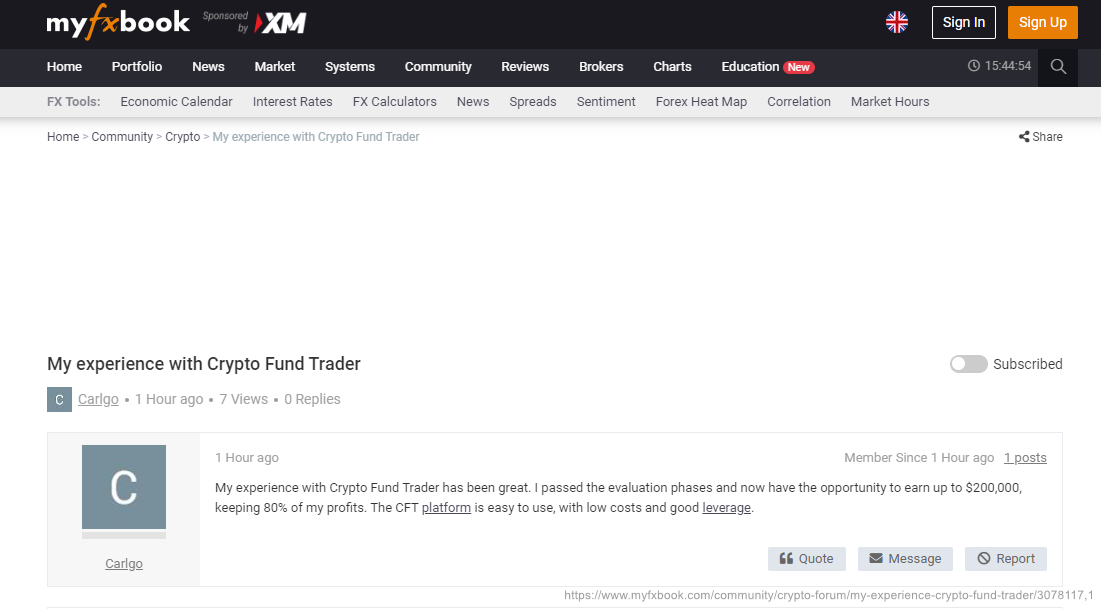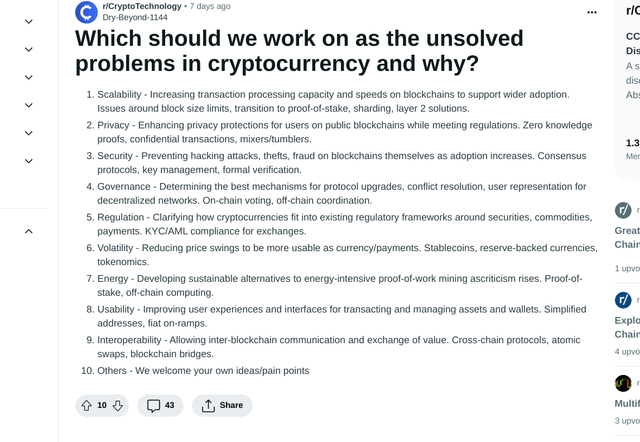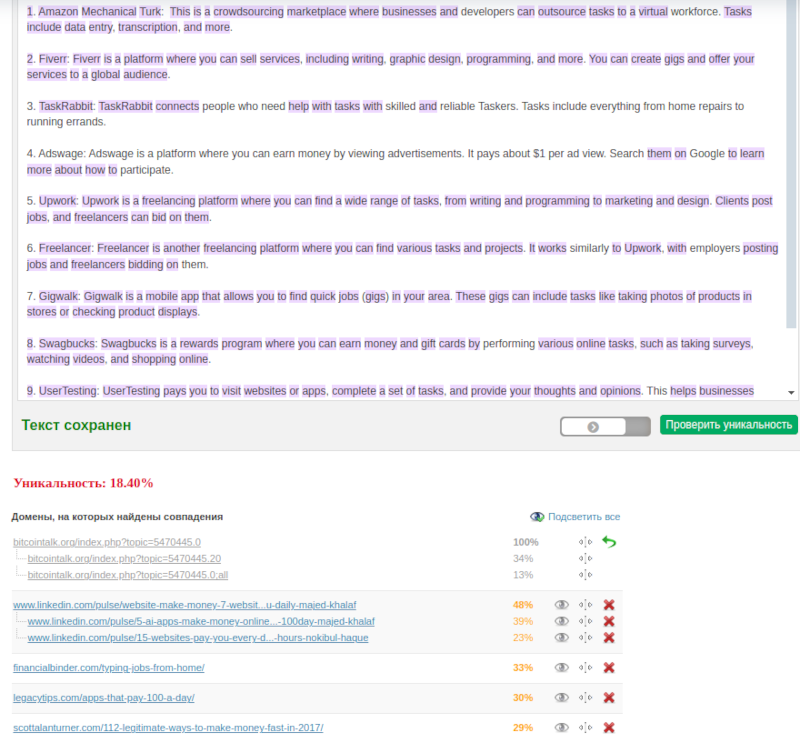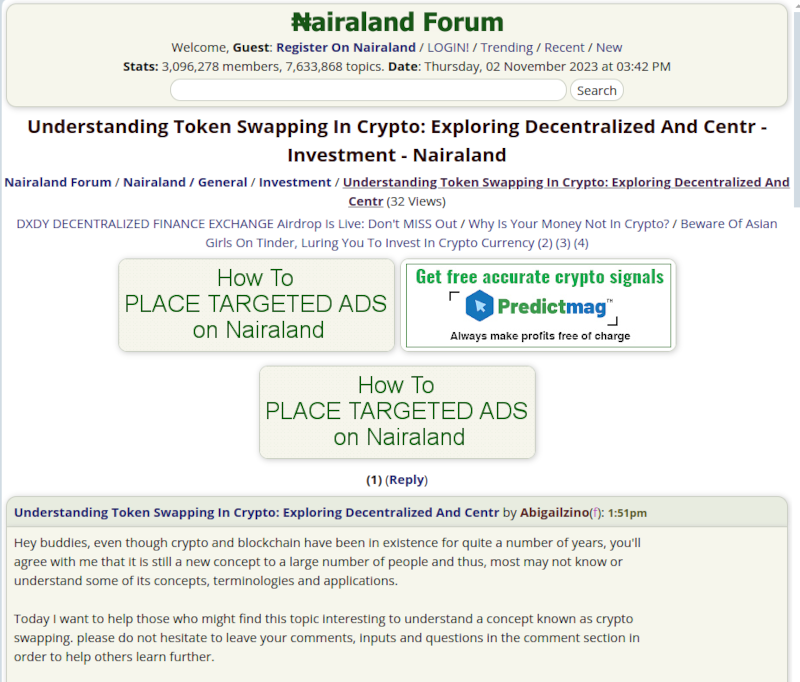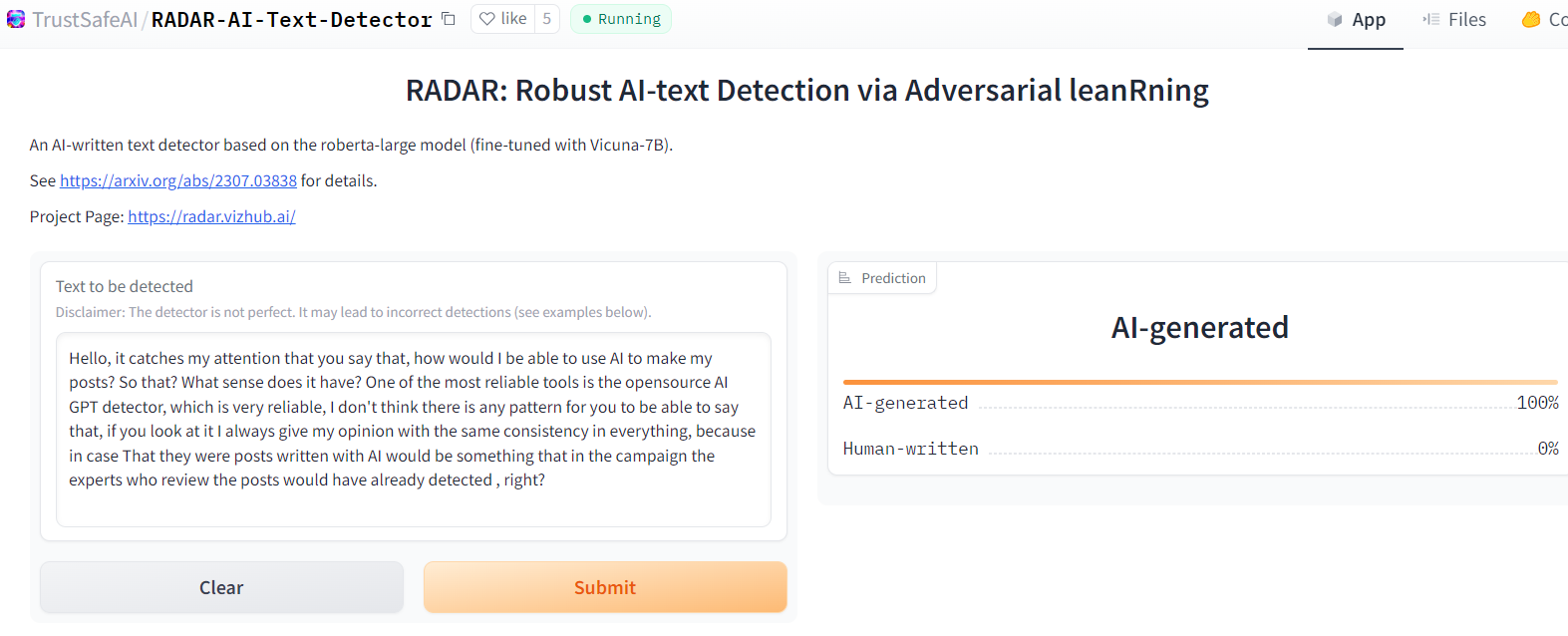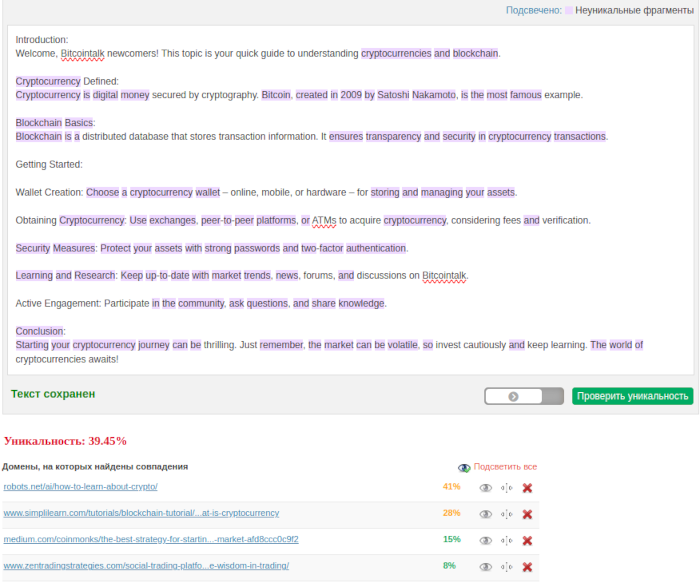I'm looking at an interesting pattern here.
User:
LUCKMCFLYIs included in spammer blacklist:
https://bitcointalksearch.org/topic/spammer-blacklist-the-shitlist-4440941Has a rating left in his profile since 2021-04-07 by actmyname.
If you go look at his latest posts he has been posting with the exact same pattern for a looong time.
Two VERY large paragraphs, without breaks, usually as a response to other users. This clearly seems fishy at first glance.
Now if you take it a step further and actually examine his posts with some AI detection tools, unsurprisingly...
Thank you very much, yes, I have followed all the updates that the Rollbit has, and to be honest, comparing with the other casinos, I see that this is very promising, of course the development is unique, you can never forget being able to continue doing things well Honestly, I was very excited when they made everything from the Rollbots NFT, because they have restored the confidence of what the NFT really is, and that puts in consideration many people who left so much money in the games they One moment was a boom, where a lot of money was made, but also where many lost big money, this is something that was very volatile, it was something that was not maintained, as I have said on previous occasions, the only NFT game that was fixed well and Because Binance absorbed it, it was Axie and this was something that we often believed, in fact I believed a lot in this technology and in everything it could have been, only that there were no controls, or anything, anyone sold and NFT would share the tokens and that's it, that was not appropriate.
https://i.ibb.co/MgkyV6k/image.pngWhen we talked about how to do to be able to have more links and referrals, we have to have a very big influence, this is easier for people who have YouTube channels or something like that, what they do is expect profits every month, it's not bad, But for those who are not influencers, how do you do it? You have to do a lot of work, go look for people by thinkers, explaining to them what they should do and how they can do it, sometimes these types of things are what we basically have to execute, I am not an influencer, I don't know what platforms to put it on, this It is something that I do not know, well at this point I have taken many marketing courses, if I already Know where to put them, on what pages, how to enter and how to do things better, then in this order of ideas we could say that when They do several things because it is important for people to enter, but always and when they are told the truth, they must remember that they are referred , if it is something that Deceives them they will not do it anymore.
https://i.ibb.co/vXPW8hS/image.pngYes, based on what you have said, I would like to highlight that word, discipline, for everything but for everything, you need to have discipline, it is the only way to go far, sometimes one has to be more disciplined than others to make a difference , and this is something that we must see with all reason, so in this order of ideas when it comes to doing things like being able to improve some processes, then you have to be disciplined, and when we are in a casino we have to have much more discipline , and to play you have to have control, or self-control, because things are very difficult, self-control can sometimes be lost because things can be hard when strong emotions, or what we call impulses, occur, Because when people go too far in the casino it is because they fail and fail because they let themselves be led by their hearts, or rather by impulses and they do not respect the money they owe or are willing to lose.
https://i.ibb.co/frgKtJ7/image.pngAI detection tools reliably find with high confidence that this user has been using artificial inteligence to craft his posts.
What's particualrly weird about this is that Stake casino has been paying this person under their signature campaign. Supposedely stake.com has someone on their payroll to read every post by participants one by one.

